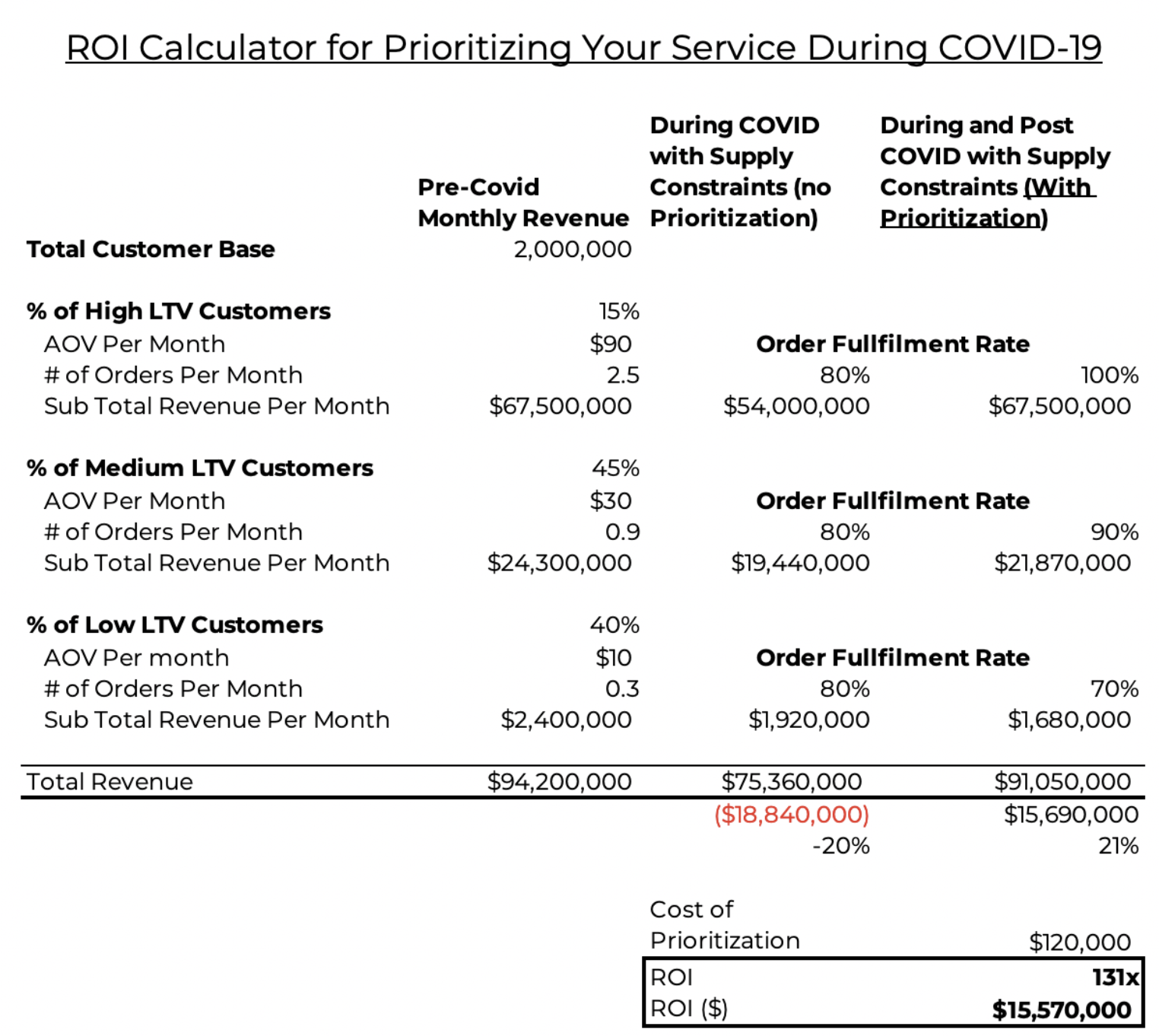The speed and scale of COVID-19’s impact is unprecedented and is forcing companies to make critical decisions with incomplete or inaccurate information. In particular, we are noticing that many businesses are struggling with rapidly changing supply and demand and with how to spend their media dollars. This is a very clear and present danger that exists on the revenue line and it can quickly become an expensive problem if not management appropriately.
In this environment, it is more critical than ever for companies to effectively target high-value customers who want the products the company can currently deliver. The challenge is that it’s hard to decipher which new and existing customers to prioritize.
Consider the scenario where a certain demographic actually needs your service today more than they ever needed it in the past. However, your marketing still focuses on a general population, including other types of customers, that no longer reflects this state of increased demand.
In a past life, I would’ve told you that this is an optimization problem that will make your top line incrementally better. However, during the COVID-19 crisis, this might be a matter of life and death for your company. If your products and marketing are catered even 10% incorrectly to the wrong market, you might be driving the company on a clear path to bankruptcy. Where should you start? Below is the framework we are seeing successful companies use to get unstuck.
Focus on these three steps to get unstuck.
- Determine your supply chain constraints
- Understand your customer personas
- Know with very little data which customers are your potential high versus low CLV customers
Determine your supply chain constraints
The first step might seem difficult, but it is a matter of accounting for the supply of product that is currently available in inventory and forecasting the supply that is likely to become available over the next 2 to 3 months.
Understand your customer personas
The next step can be difficult or easy depending on the first party data that you may or may not have collected. In addition, segmentation can become easier if you also have third-party data, such as Experian or Acxiom, to include. In the digital world you can also use LiveRamp data. Use the dataset to understand what personas occur naturally in your customer base.
This is not as simple as assigning a persona based on demographics. The important step is to look at combinations of attributes that make the most relevant personas. For example, if you track categories of purchases, one persona might be an account owned by a couple that purchases from categories such as men’s grooming and women’s jewelry.
Know with very little data which customers are your potential high versus low CLV customers
Lastly, do you want to be able to forecast out the CLV of every single current customer and new lead? You cannot afford to wait for multiple transactions at the individual customer level to predict CLV. And you cannot rely on models created over the last three years because that data is not reflective of future buying. This is likely the most difficult part of the puzzle. You need to rely on very little customer buying behavior and your instincts to modify the models to predict the future behavior of the customer.
What you’ll need
Time is of the essence in this case and quick executive decision making will be required. In addition, you’ll also have to think through the logistics of how your data science and logistics teams can coordinate to solve this problem. You will need:
- A system that can seamlessly connect to your supply chain database
- Access to your CRM system that houses the attributes about your customers (data warehouse, payment system, and/or marketing automation system)
- An effective model that accurately predicts early lifetime value of the leads and customers at the individual level
- A team that can build a solution within a matter of days and deploys it into your media buying process and systems
How can you measure the ROI of this effort?
To compute the ROI for prioritizing your service and fulfillment by CLV, we have created a simple calculator that can help you assess the impact on your business. Click here or on the image below to download the original excel file and see how this can drive an outsized impact in your organization.
We are the customer intelligence partner that can accurately calculate customer lifetime value early in the customer journey, at or before the first transaction. Contact us at [email protected] or complete this form to connect with us and get unstuck. We can help your team prioritize your marketing and supply chain strategies around high CLV customers.
